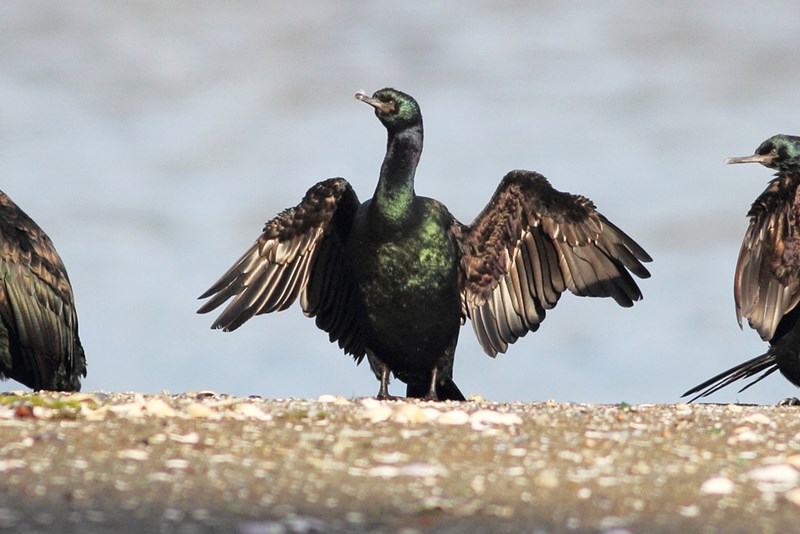Vancouver is playing host to two significant bird events this summer — the 27th International Ornithological Congress, which takes place every four years and attracts ornithologists (bird scientists) from around the world, and the inaugural Vancouver International Bird Festival.
Each week leading up to the festival and congress Aug. 19-26, we’ll highlight a different bird. British Columbia is home to 573 species of birds and many can be found in and around Vancouver.
Bird of the Week
Pelagic Cormorant
Species Name
Phalacrocorax pelagicus
Appearance
Length: 64-89 centimetres
Wingspan: 100-121 centimetres
Weight: 1,400-2,450 grams
A slender, upright water bird with relatively short wings, a long neck, slender bill and webbed feet, the pelagic cormorant is large compared to most other birds but relatively small compared to other species of cormorant. During breeding season, they grow two short feathered crests on their head, one from the crown and one from the nape.
They are glossy black all over with a metallic iridescence. Breeding plumage includes white thighs, white filoplumes around the head and neck, and bright reddish patches of skin below the eyes. Juveniles are duller in appearance, from brownish-grey to a flat black.
Habitat/Behaviour
These seabirds inhabit the coasts of the Northern Pacific, often seen in significant numbers of rock outcroppings, pilings, docks and ships. In the winter they can also be found in the open ocean.
They are effective deep-sea divers, able to propel themselves efficiently under water as deep as 30 metres. They prefer to hunt around kelp beds and rocks, typically in sheltered bays but also at sea. They feed mostly on small fish and crustaceans.
Breeding
They are monogamous, nest on cliffs, lay two to five light blue eggs and will have one brood.
Nests are made of grasses, stringy plant and seaweed material, and are held together by the bird’s guano (excrement). Pairs stay faithful to their nest, revisiting and improving the nest each year.
More about birds:
- Get the Vancouver bird checklist online or on your iPhone
- 10 simple birding tips
- Check out more on the 27th International Ornithological Congress and all the events planned for the inaugural Vancouver International Bird Festival
Source: Vancouver International Bird Festival



